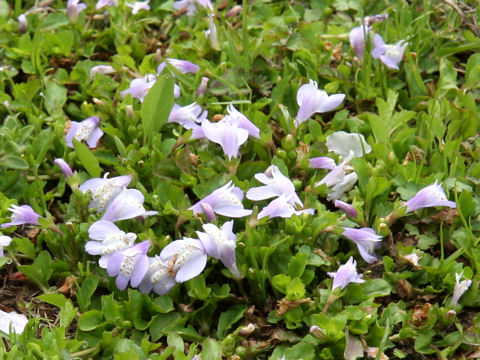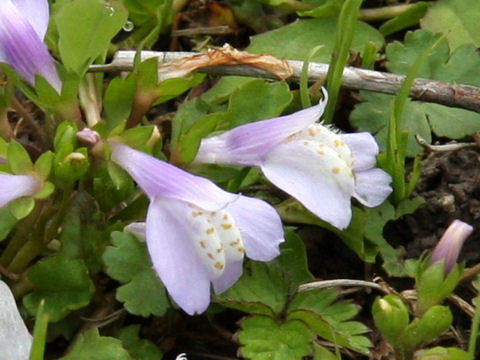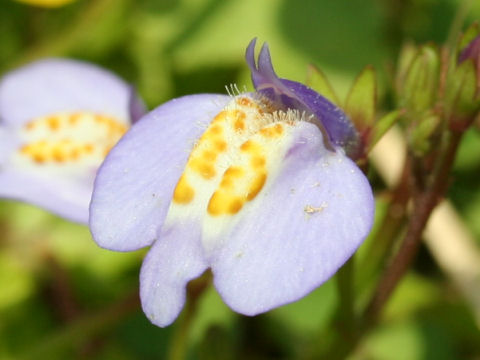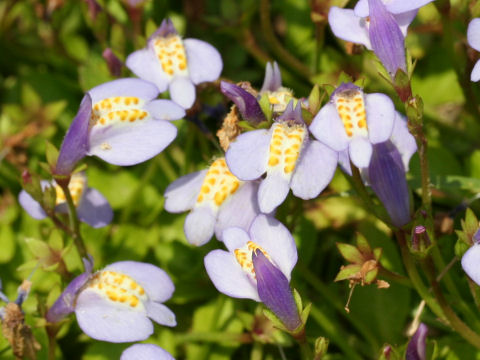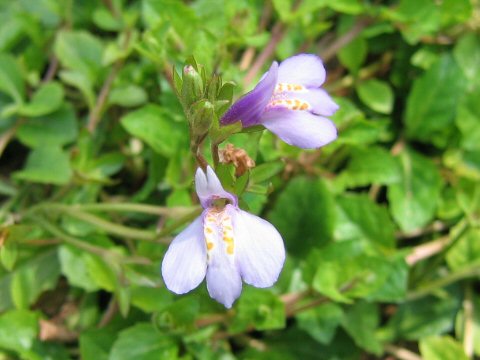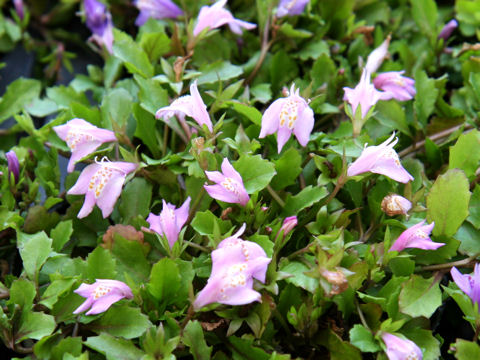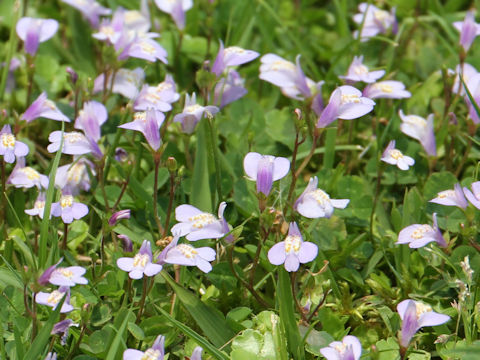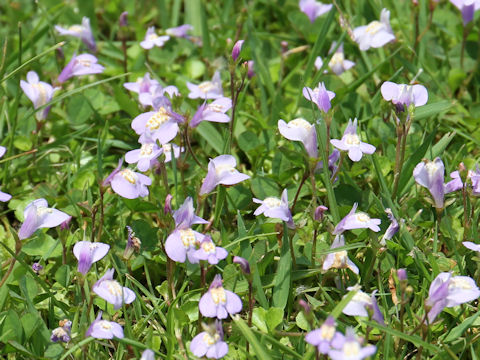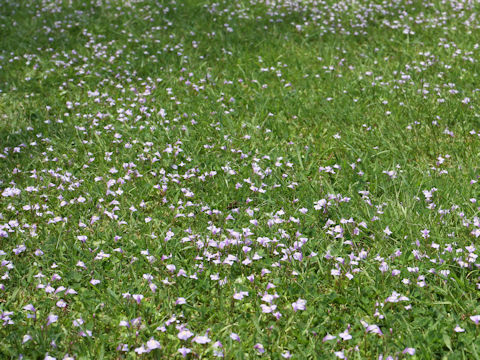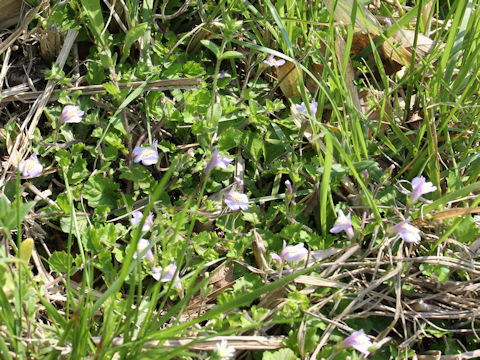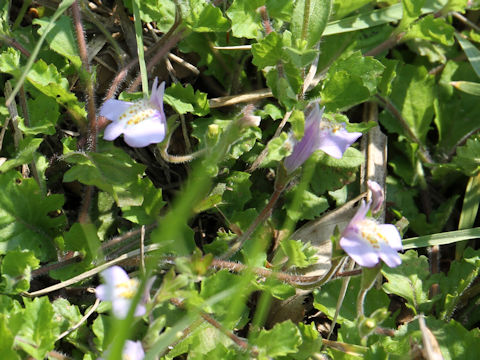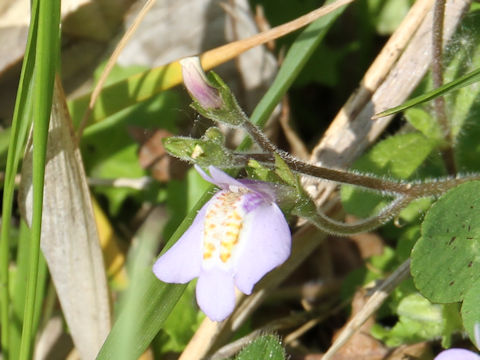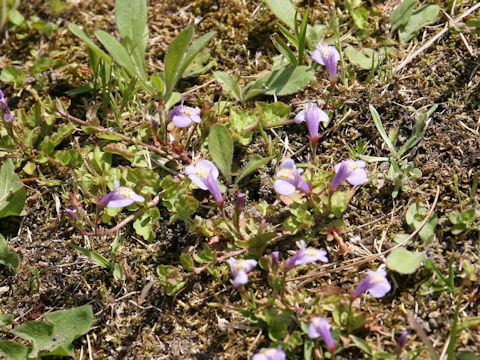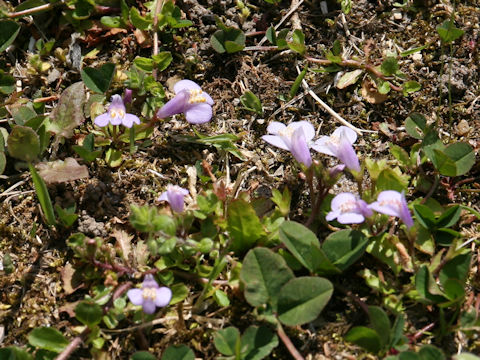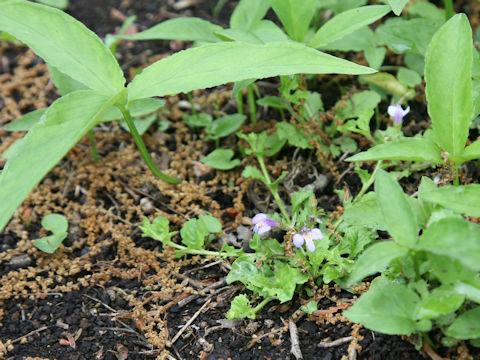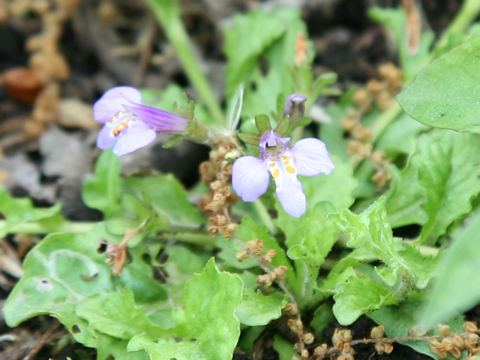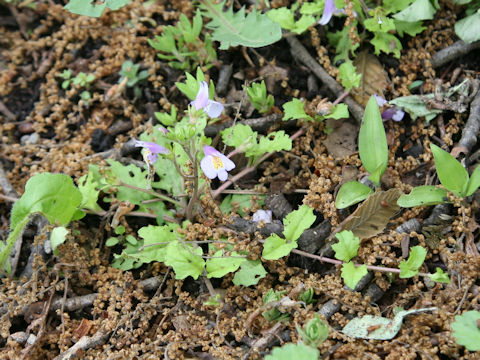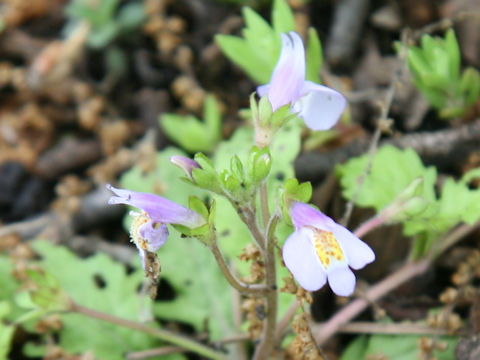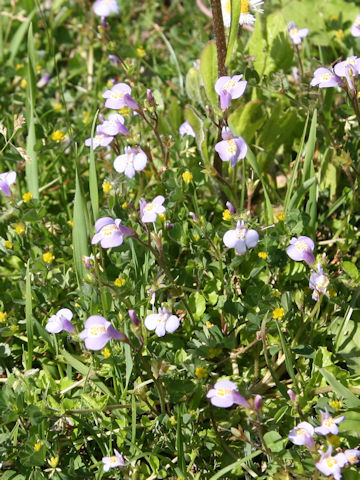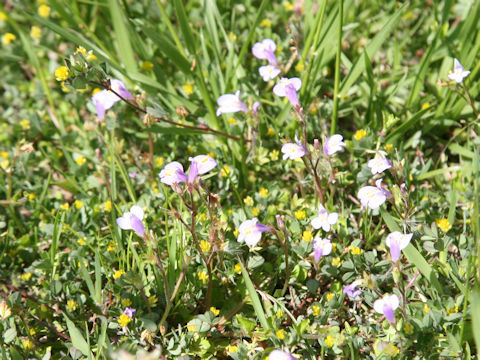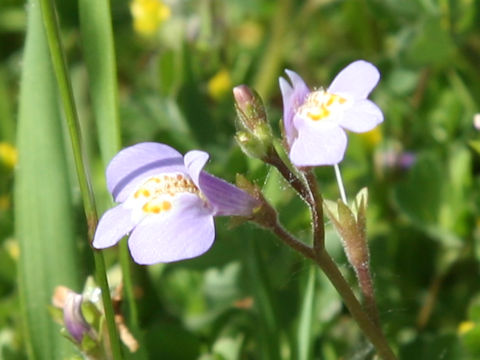
|
|
|
|
−− もっと見る(Show more)−−
−− 閉じる(Close) −−
|
|
|
|
わが国の本州から四国・九州、それに台湾や中国などに広く分布しています。水田の畔や湿った畑地に生え、高さは5〜15センチになります。ほふく茎を出して広がり、4月から5月ごろ、淡い紫色から紅紫色の花を咲かせます。和名は、花のかたちを「さぎ」の頭に、茎や葉が地面に広がるさまを「こけ」に見立てたもの。別名で「むらさきさぎごけ(紫鷺苔)」とも呼ばれます。台湾華語では「葡莖通泉草」、中国名では「匍茎通泉草(pu jing tong quan cao)」。 |
|
|
ゴマノハグサ科サギゴケ属の多年草で、学名は Mazus miquelii。英名はありません。 |
|
|
The "Sagi-goke" (Mazus miquelii) belongs to Scrophulariaceae (the Figwort family). It is a perennial herb that is distributed widely westward from Honshu to Shikoku and Kyushu in Japan, as well as Taiwan and China. This herb grows in rice field linches and wettish fields, and can reach 5-15 cm in height. The plant spreads by creeping rhizomes. The pale purple to magenta flowers bloom in April and May. Its Japanese name is derived from the shape of its flowers, which resemble the head of a "heron", and the way its stems and leaves spread out on the ground, which resemble "moss". In Taiwanese, it is called "葡莖通泉草", and in Chinese, "匍茎通泉草" (pu jing tong quan cao). |
|
|
[上・中1] 埼玉県さいたま市「田島ヶ原」にて、2010年04月11日撮影。 [中2・中3] 大阪市鶴見区「鶴見緑地公園」にて、2006年04月28日撮影。 [中4] 静岡県浜松市「浜名湖花博」にて、2004年04月11日撮影。 [中5] 茨城県小美玉市「美野里花木センター」にて、2009年04月08日撮影。 [中6〜中8] 宮城県仙台市「東北大学植物園」にて、2016年05月14日撮影。 [中9〜中11] 大分県由布市湯布院町「由布岳」にて、2018年04月27日撮影。 [中12・中13] 宮城県仙台市太白区秋保温泉にて、2021年05月11日撮影。 [中14〜中17] 宮城県川崎町支倉にて、2022年05月14日撮影。 [中18〜19・下] 宮城県大河原町「白石川河川公園」にて、2024年05月03日撮影。 |

|
|
Shu Suehiro |
